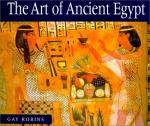|
This section contains 5,769 words (approx. 20 pages at 300 words per page) |

|
Variety.
Egyptian art of the New Kingdom (1538–1075 B.C.E.) displays a wide variety of styles within the established artistic tradition, by this point nearly 2,000 years old. The New Kingdom includes the classical images of the warrior pharaoh Thutmose III (1479–1425 B.C.E.) but also the androgynous king, Akhenaten (1352–1336 B.C.E.). It includes relief based on Old Kingdom (2675–2170 B.C.E.) models along with more fluid depictions of both people and places. The variation in size runs from the colossal to the minute. Impassive royal sculptures from the early Eighteenth Dynasty (1539–1425 B.C.E.) contrast with Amarna period (1352–1332 B.C.E.) scenes that seem to represent a loving royal family. Art of the New Kingdom reflects a serious change in Egyptian perceptions of the world from the beginning to the end of the period.
Hyksos.
The Hyksos, a Semitic-speaking ethnic group that ruled...
|
This section contains 5,769 words (approx. 20 pages at 300 words per page) |

|




